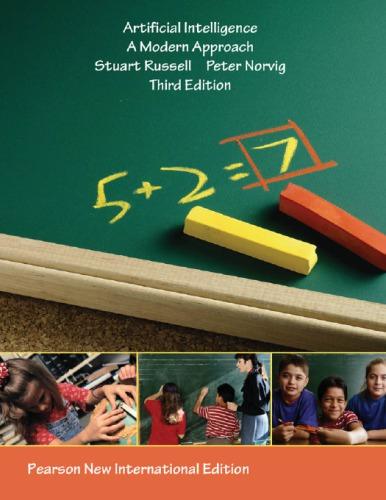1 Solve the cryptarithmetic problem in Figure 2 by hand, using the strategy of back- tracking with...
Question:
1 Solve the cryptarithmetic problem in Figure 2 by hand, using the strategy of back-
tracking with forward checking and the MRV and least-constraining-value heuristics.
6 Show how a single ternary constraint such as “A + B = C” can be turned into three binary constraints by using an auxiliary variable. You may assume finite domains. (Hint:
Consider a new variable that takes on values that are pairs of other values, and consider constraints such as “X is the first element of the pair Y .”) Next, show how constraints with more than three variables can be treated similarly. Finally, show how unary constraints can be eliminated by altering the domains of variables. This completes the demonstration that any CSP can be transformed into a CSP with only binary constraints.
7 Consider the following logic puzzle: In five houses, each with a different color, live five persons of different nationalities, each of whom prefers a different brand of candy, a different drink, and a different pet. Given the following facts, the questions to answer are “Where does the zebra live, and in which house do they drink water?”
The Englishman lives in the red house.
The Spaniard owns the dog.
The Norwegian lives in the first house on the left.
The green house is immediately to the right of the ivory house.
The man who eats Hershey bars lives in the house next to the man with the fox.
Kit Kats are eaten in the yellow house.
The Norwegian lives next to the blue house.
The Smarties eater owns snails.
The Snickers eater drinks orange juice.
The Ukrainian drinks tea.
The Japanese eats Milky Ways.
Kit Kats are eaten in a house next to the house where the horse is kept.
Coffee is drunk in the green house.
Milk is drunk in the middle house.
Discuss different representations of this problem as a CSP. Why would one prefer one representation over another?
Step by Step Answer:







